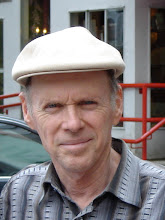Robert Reich, Secretary of Labor in the Clinton Administration, had a lengthy article in the New York Times on September 3, 2011. The article carries on Reich's program of twisting and obfuscating the real history of how we got to our present disastrous situation of 25 million or more unemployed.
Reich also refuses to mention the one and only one method available to solve our problem and that is to put tariffs on imported goods from foreign countries that don't buy from us in approximately equal quantities.
Reich is a highly intelligent man. He must know that his twists and obfuscations are not factual. Why is he doing this tremendous disservice to America?
Reich is very popular right now, receiving invitations to be on Wolf Blitzer and other prominent TV and radio shows. There is a strong censorship in place in the media. Anyone who tells the truth of how our jobs were lost, and says what has to be said about getting our jobs back from overseas, is ostracized and will never be invited to be on TV or in the newspapers.
But someone with Reich's public recognition status should be be able to go against the censorship and speak the truth. Maybe if he did that he would get even more acceptance on TV and radio! Breaking the censorship would be big news!
I submitted a rebuttal to Reich's article. Of course no response from the New York Times. The New York Times is firmly in the twisting and obfuscation camp, especially with their columnist Thomas Friedman.
In any case, here is my rebuttal to Reich's article!
Why does Robert Reich mention the “middle class“ so often (article, September 3, 2011)? Is it because he doesn’t want to deal with a “lower class”?
In any case, here is my rebuttal to Reich's article!
Why does Robert Reich mention the “middle class“ so often (article, September 3, 2011)? Is it because he doesn’t want to deal with a “lower class”?
Instead, let’s talk about the “rich”, as defined by Reich, and the non-rich. The clear implication of Reich’s first few sentences is that there is one fixed stream of income. The rich are getting more than their share of this income, leaving the others, the non-rich, without “enough purchasing power to keep the economy going…”.
But there is not a fixed income stream to be shared out. More on this point later!
Why does Reich mention the income of the rich but does not mention the word “income” in relation to the non-rich? I suspect use of the word “income” would force Reich to acknowledge the major cause of increasing disparity, namely 20 or 25 million of the non-rich are unemployed and therefore without income! Simple as that! No need for intricate theories.
Now we come back to Reich’s phrase about “purchasing power”. Sending manufacturing jobs overseas has made the American economy a sieve. People can use their “purchasing power” but it is very difficult to avoid buying a foreign-made item. So the money spent immediately drains out to foreign countries, rather than staying in America
Now we can also go back to Reich’s strong implication that there is a fixed income stream and the rich receive more than their share of it. If our non-rich had employment, and if we were not suffering a hemorrhage of over $500 billion per year, the rich could continue their present income but the non-rich would have more income! In other words, the pie would be bigger.
Reich has an explanation for lack of employment: “…new technologies – container ships, satellite communications, eventually computers and Internet – started to undermine any American job that could be automated or done more cheaply abroad.”
This explanation has some truth to it but hides the real story of how our manufacturing jobs went overseas. If we don’t know how we got to our present problem of massive unemployment, we cannot solve the problem.
In the early 1960s, some American manufacturers got the idea of transferring their manufacturing activity to low-wage countries. Their profits would increase because they would continue to sell their products in the United States
This process of transferring manufacturing activity overseas was solely on the initiative of the manufacturers. It was not forced by external factors such as competition or technology advances.
The 1960s mark a turning point for the United States
According to Reich, “Starting in the late 1970s, the middle class began to weaken.” What on earth is he saying here? But the fact is that by the late 1970s the continuous transfer of manufacturing activity to overseas locations was having a noticeable effect on the economy.
Reich further observes: “The middle class nonetheless continued to spend…”. Is this statement part of a “blame the victim” strategy? I thought Reich wants people to exercise “enough purchasing power to keep the economy going”.
The bottom line is that there is one and only one way to solve our unemployment problem and that is to get our manufacturing jobs back from foreign countries, starting with low-tech consumer products.
The survival of the United States of America China

No comments:
Post a Comment